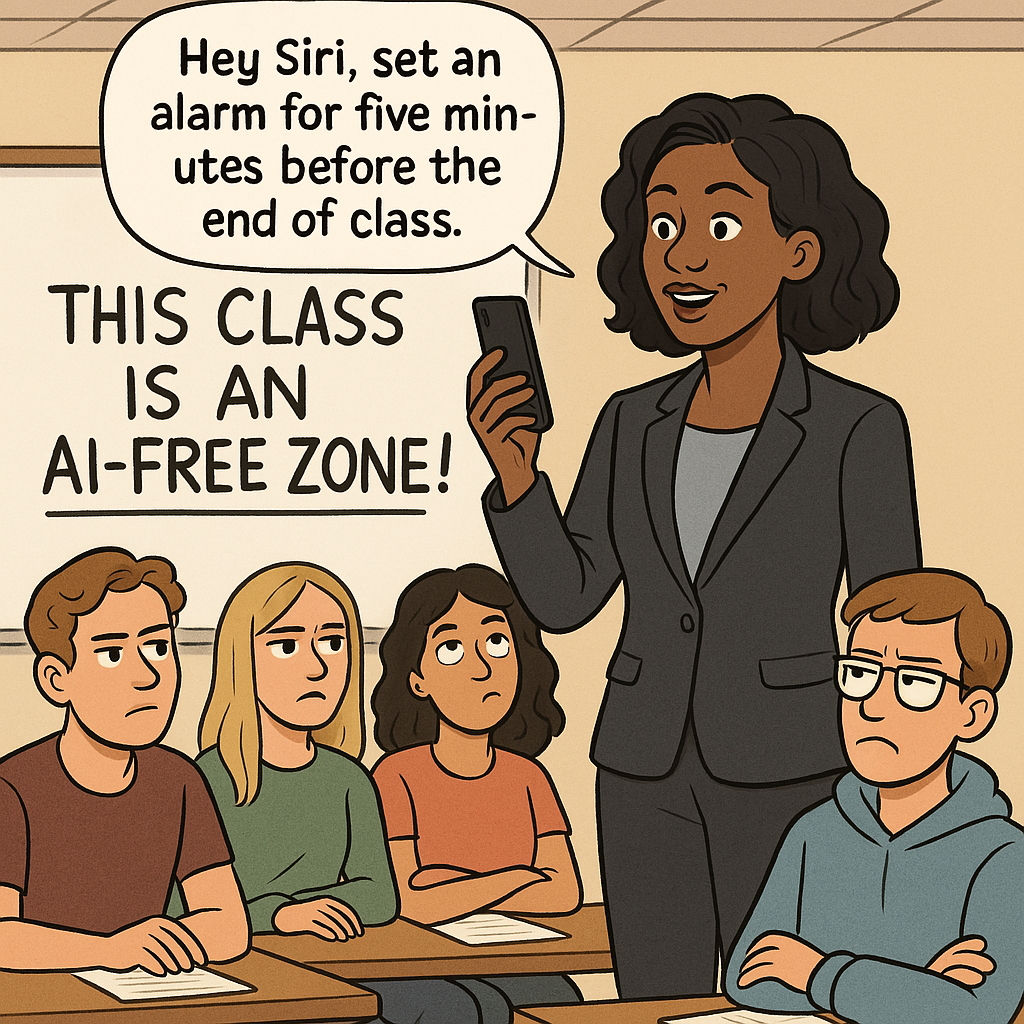AI Functions and Mindsets

Possibly the most dominant reason for educators’ hesitations about AI-enabled OER is that most of us are still unclear about
- What Generative AI really is (and isn’t)
- How Generative AI tools work
- How, exactly, educators who are new to Generative AI tools can use them in a way that actually brings value to teaching and learning while also saving time
The reality is that, much like in the illustration with which we started this chapter, you are probably already using Generative AI tools in your daily life, and possibly as a support for your teaching! As GenAI tools evolve to become increasingly user-friendly, it will correspondingly become easier to use those tools without extensive training or practice being necessary. In the current moment (this chapter was written in mid-2025), though, some basic understanding and practice with GenAI tools can really go a long way.
In this chapter, we attempt to unpack Generative AI and how to use it, especially in the context of Open Education. As you explore the specific examples provided in later modules, refer back to this page as needed; hopefully it will help you determine whether and how you might draw from those examples in creating your own OER.
How Generative AI Works
Definitions
Let’s start with some key terms that will help you follow along as you explore GenAI tools.
AI Use in Education for Beginners
Ethan Mollick, Associate Professor at the Wharton School, and Lilach Mollick, Director of Pedagogy at Wharton Interactive, have created the Wharton Interactive Crash Course: Practical AI for Instructors and Students. There are five videos in the series:
- Introduction to AI for Teachers and Students
- Large Language Models (LLMs)
- Prompting AI
- AI for Teachers
- AI for Students
Click on the “hamburger” (three horizontal lines) menu to the right of the “Share” link to choose which video to view.
Code.org offers an AI 101 for Teachers series to help educators understand how AI works and how to use it. In AI 101 for Teachers: Transforming Learning with AI, they provide basic guidance to help beginners use AI to achieve teaching and learning goals.[1]
Prompt Engineering
Resource for Students (and for You!)
Frameworks for AI in Open Education
UNESCO Framework
Knowing the type of AI use you are attempting can help you choose the right tool, search for existing prompts or examples to model, and ensure that the resource you are developing meets your goals.
- Professional
- Ethical
- Sustainable
- Equitable
Framework for Using AI in Open Education
Student Guidance: Students will use AI in our Open Pedagogy assignments whether or not we address it, so establishing ethical use parameters while still respecting student choice is important in every single Open Pedagogy assignment.
Pedagogical Value: As with any educational technology, it’s crucial that we use Generative AI tools because their function fits the pedagogical need, not just because they’re fun. We must ensure that the pedagogical need is served by every element of an AI-infused Open Pedagogy assignment.
Ethical Consistency: For all our concerns about the ethics of AI, educators often don’t practice ethical usage themselves or spell out the ethical implications for their students. Proactively addressing the access, environmental, prejudicial, and factual pitfalls, establishing practices to mitigate them, and modeling those practices in our own work will help us establish future ethical habits in our students, our peers, and ourselves.
Human Intervention: Use of generative AI without intentional, regular human intervention built in leads to significant errors of fact and increases the potential for inequities to creep into our learning environments. Identifying where human intervention should occur along an AI-assisted learning experience vastly improves its effectiveness and teaches our students better critical thinking skills.”
- AI 101 for Teachers: Transforming Learning with AI. (2023). Licensed by Code.org under a CC BY-NC-SA 4.0 license. ↵